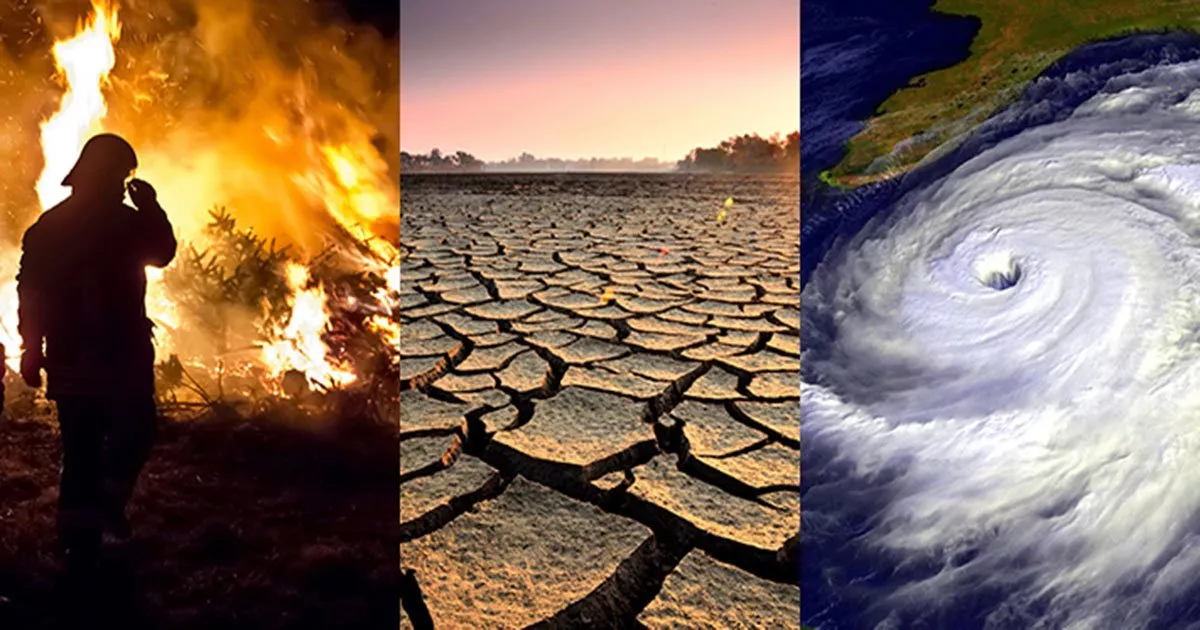

Climate change isn't just another topic for debate—it's the defining issue of our time. But what exactly is climate change? Is it a natural cycle, or are humans the driving force behind it? Before you settle on your view, let's dive into the facts.
At its core, climate change is the long-term alteration in global temperatures and weather patterns. And here's the kicker: we're currently in a steep warming trend that's reshaping our planet. But what’s behind it?
The phenomenon of global warming isn’t just a buzzword from the past few decades. In fact, scientists have been studying this trend for over 150 years. Research on climate change dates back as far as 1824—showing just how long it’s been on the radar of the scientific community. The studies listed below aren't just citations; they’re a timeline that shows how climate change has been a pressing concern for generations.
In 1824, Joseph Fourier calculated that a planet the size of the Earth should be much colder. Saying that something in the atmosphere must be acting like a blanket, keeping it warm.1
In 1856, Eunice Foote discovered what the blanket was. Showing that carbon dioxide and water vapor were mixing in the atmosphere, trapping infrared radiation from the Sun.2
In 1896, a Swedish scientist Svante Arrhenius, first predicted that changes to the carbon dioxide levels in the atmosphere could significantly alter the ground temperatures.3
In 1938, Guy Callendar published a paper titled “The artificial production of carbon dioxide and its influence on temperature.” The report argued that the artificially producing carbon dioxide from burning fossil fuels raised temperatures. He stated that approximately three-quarters of CO2 emitted through such means would remain in the atmosphere.
The radiation absorption coefficients of carbon dioxide and water vapour are used to show the effect of carbon dioxide on “sky radiation.” From this the increase in mean temperature, due to the artificial production of carbon dioxide, is estimated to be at the rate of 0.003°C. per year at the present time.
The temperature observations at zoo meteorological stations are used to show that world temperatures have actually increased at an average rate of 0.005°C. per year during the past half-century. Guy Callendar – 1938 4
In 1941, Milutin Milankovic was able to link ice ages to the Earth’s orbital characteristics. Showing that tiny wobbles in the Earth’s orbit caused ice ages.5
In 1956, Gilbert Plass formulated the “Carbon Dioxide Theory of Climate Change“.6
The list goes much longer, but I wanted to list some of the earlier papers written on the subject as they give you an idea of how the scientific community came to their conclusion.
Even if you didn’t read all those citations, you could see from the dates that scientists have suspected the recent warming trend was being caused by something unnatural.
Scientists have been able to piece together global average temperatures going back well over 100 years.
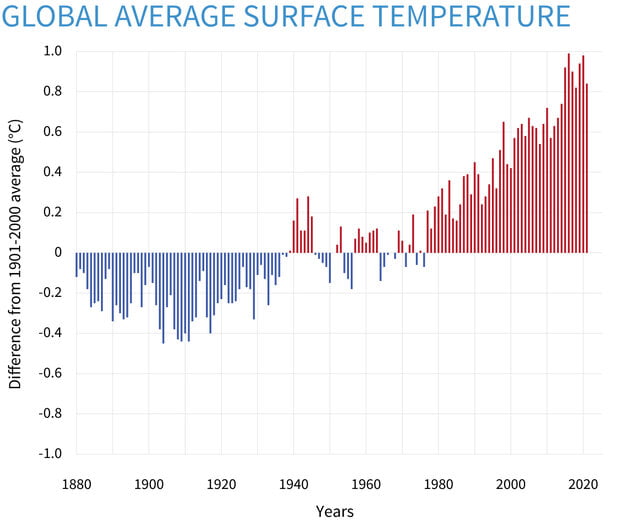
The Earth has always experienced natural warming and cooling cycles. In fact, it’s often been much hotter than it is today. So, why should we be concerned now?
What’s different this time around? The speed. While it typically takes thousands of years for the Earth’s temperature to shift by even a few degrees, we’re now seeing changes in just a few decades. This rapid warming is what has scientists sounding the alarm. Unlike the slow, natural cycles where life could gradually adapt, the current pace leaves little room for adjustment.
Throughout history, there have been unusual events—like massive volcanic eruptions—that caused rapid cooling. But these were temporary blips corrected over a few years. Despite these events, the Earth today is actually cooler than it has been over most of its 400-million-year history.
The chart below illustrates the Earth's average temperature over the past 400 million years. This data comes from a variety of sources, including ice core samples from Antarctica, ocean sediments, ancient tree rings, corals, and formations like stalactites and stalagmites. These pieces of evidence combine to give us a clear picture of the Earth's long-term climate history.
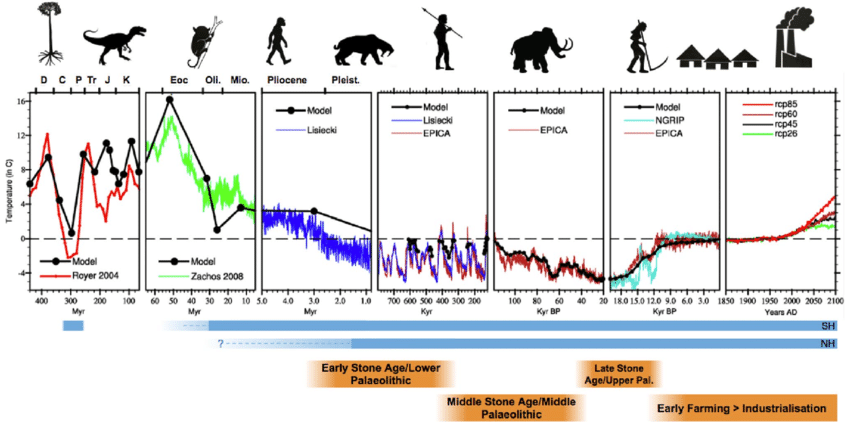
Take a moment to examine the third box on the graph above. Starting in the Pliocene Era, the Earth's temperature dropped by less than 10 degrees—but this happened over a staggering four-million-year span. Despite the gradual change, this significant drop in temperature was catastrophic, wiping out nearly all life on Earth, including most dinosaurs.
However, it’s crucial to interpret this graph carefully. While it might appear that temperatures have been rising and falling gradually, the timeline at the bottom tells a different story. The earlier periods on this graph cover much longer timespans, which can make the changes seem less dramatic than they actually were.
Now, let’s shift our focus to the graph below, which covers the last 2,000 years. Here, the recent trend is unmistakably pronounced. Unlike the ancient past, where data could be stretched over millennia, this graph shows a sharp, significant spike in temperature. It’s much harder to cherry-pick an argument when you’re faced with such a clear and alarming trend.
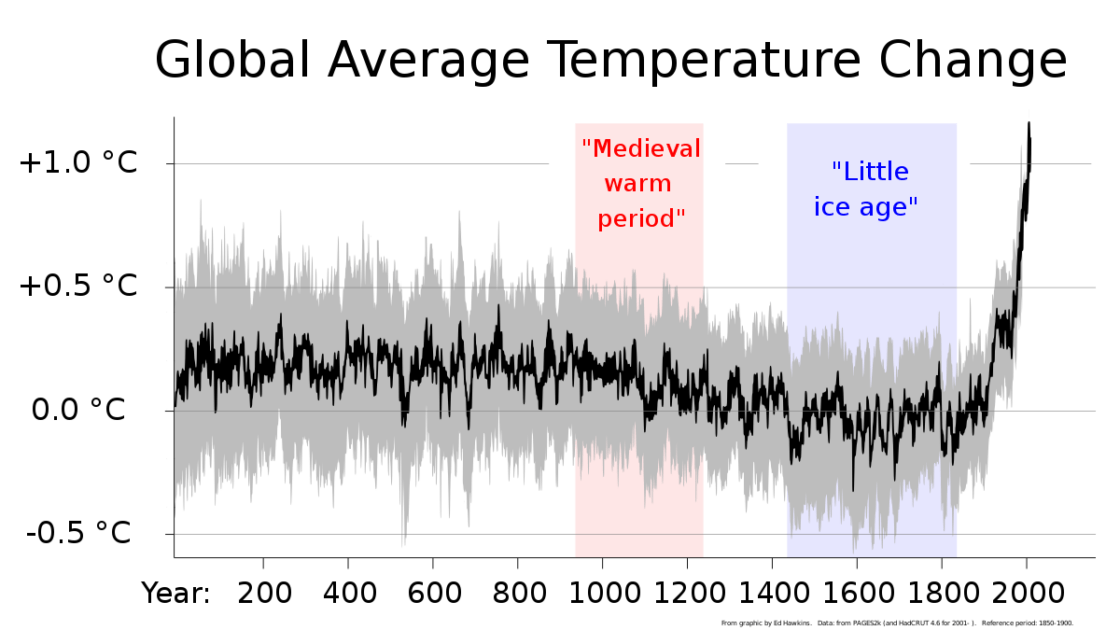
Most people today agree that the Earth is warming, but the real debate centers around one question: Is this warming caused by human activity, or is it just a natural cycle? Let’s break down both sides of the argument.
Every winter, we experience cold snaps and heavy snowstorms, often leading some to quip, “Where’s your global warming now?” This argument seems to stem from a misunderstanding of the difference between “weather” and “climate.” Just to clear things up:
Confusing these two leads to misguided conclusions. Just because we experience cold weather doesn’t mean the planet isn’t warming on a broader scale.
Another common argument is that "not all scientists agree on climate change." However, this claim doesn’t hold up under scrutiny. Large-scale surveys of Earth and climate scientists have been conducted for over 30 years, and the consensus is clear: the vast majority of scientists agree that climate change is real and significantly driven by human activity.
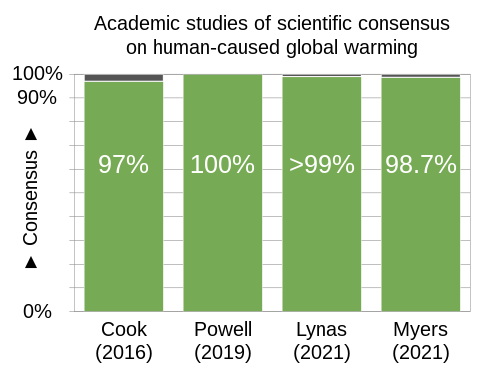
Some argue that the media is exaggerating or fabricating the climate change narrative to sensationalize the news. While it’s true that the media thrives on bad news, that doesn’t mean climate change isn’t real. Climate change is bad news, and of course, it gets attention.
In fact, you could argue that the media has done a poor job communicating the severity of the issue. Climate change has been a concern for over 150 years, and many scientists now believe we’ve reached a point of no return. Dismissing it as media hype is like saying JFK wasn’t really assassinated just because it was heavily covered in the news. It simply doesn’t hold up.
As for other arguments against climate change, many aren’t even worth addressing. Some people are drawn to conspiracy theories, and no amount of factual information will change their minds.
The science is straightforward: when you burn carbon-based materials, carbon dioxide (CO2) is released into the atmosphere. Given the vast amounts of carbon we've extracted and burned, it’s no surprise that CO2 levels are soaring. Scientists have accurately predicted temperature rises over the past 20 years, which is a strong indicator that they know what they’re talking about.
We’re currently seeing CO2 levels in the atmosphere that haven’t been reached in nearly a million years. No other natural disaster or event has caused such a spike in CO2. The only explanation is that it’s coming from human activities like burning fossil fuels and clear-cutting forests.
In fact, CO2 levels have been linked to fossil fuel use for over a century. A significant paper 7 written in 1956 by scientists Roger Revelle and Hans Suess detailed carbon emissions from the mid-19th to the mid-20th century. Even back then, they recognized the potential for disaster. This isn’t a new issue—it’s just one that’s become more urgent.
The polar ice caps are melting at an unprecedented rate, contributing to rising sea levels worldwide. This not only threatens coastal communities with flooding but also disrupts global weather patterns. The loss of reflective ice surfaces also accelerates warming, as more sunlight is absorbed by the darker ocean water.
Hurricanes and tropical storms are becoming more powerful and destructive. Warmer ocean temperatures fuel these storms, leading to more intense rainfall, stronger winds, and greater storm surges. Recent years have seen record-breaking hurricanes in terms of both frequency and intensity.
Rising ocean temperatures and acidification are causing widespread coral bleaching, where corals lose their vibrant colors and become more susceptible to disease and death. This not only devastates marine ecosystems but also affects the livelihoods of communities that rely on coral reefs for fishing and tourism.
Prolonged droughts are becoming more common in many parts of the world, leading to water scarcity, reduced agricultural yields, and food shortages. As rainfall patterns shift and temperatures rise, regions that once had reliable water supplies are now struggling to meet demand.
In the Arctic, permafrost is thawing at an alarming rate. As the ground thaws, it releases stored carbon in the form of methane, a potent greenhouse gas. This creates a feedback loop, where thawing permafrost accelerates global warming, leading to even more thawing.
If you live on the east coast of the Great Lakes, you might have noticed snowstorms getting heavier and blizzards becoming more frequent. This is directly linked to the warming of the lakes themselves. As the lakes remain unfrozen for longer periods during the winter, they evaporate more moisture into the air. This extra moisture fuels heavier lake-effect snowfalls, making winter storms more intense.
In the southwestern United States, wildfires are becoming more frequent and intense. Several factors contribute to this dangerous trend. Rising temperatures cause snow to melt faster in the mountains, which leads to grasses drying out earlier in the year—just in time for the hottest, driest part of the season. Additionally, declining snowfall leaves the region drier for longer periods. These conditions create a perfect storm, extending the wildfire season and making fires more destructive.
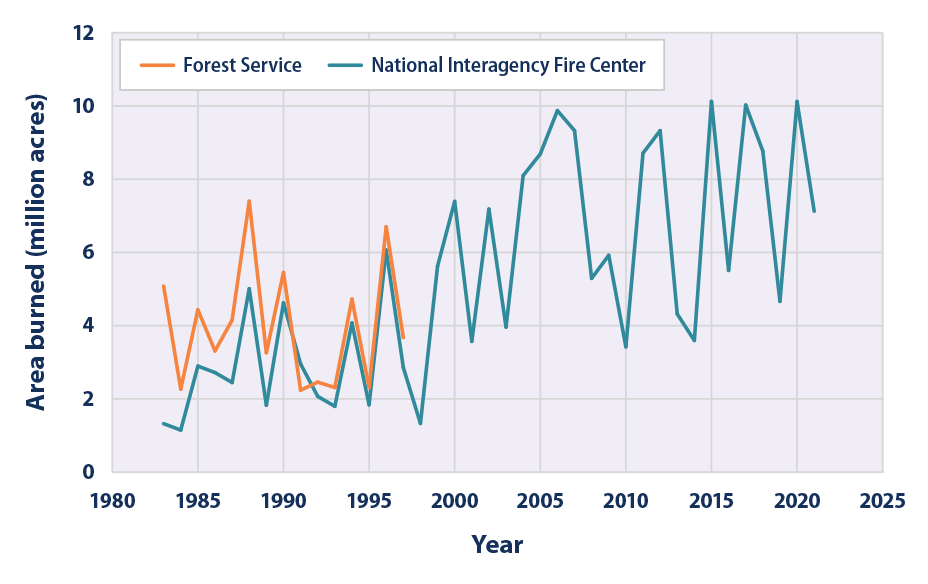
Ironically, North America might not experience the same level of warming as other parts of the world. While we’ll still face rising sea levels, more forest fires, and increasingly intense weather, the average temperature might not climb as dramatically. This is due to the jet stream weakening and dipping south more often, leading to more frequent winter weather events that help balance out the temperature.
However, that doesn’t mean we’re off the hook. Summers will continue to get hotter, and winters will be warmer overall, punctuated by more severe cold snaps.
The root cause of this unusual pattern lies in the Atlantic Ocean. As the oceans warm, the North Atlantic Oscillation weakens, allowing the jet stream to dip farther south than usual. The image below illustrates the cooling effect caused by weakened ocean currents from 1990 to 2010.
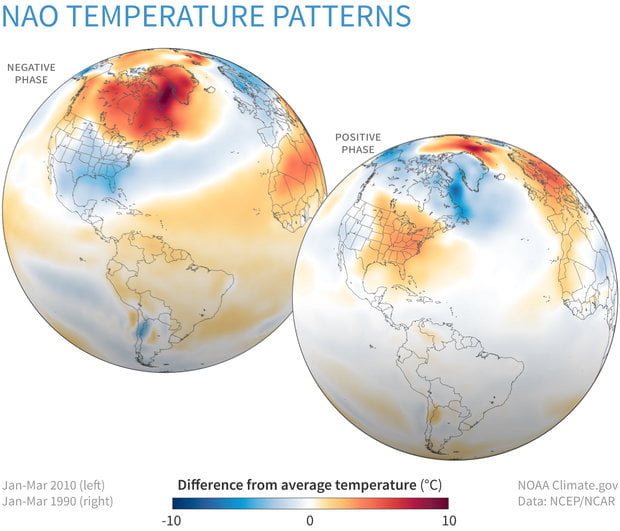
Climate change is here to stay, and it’s a crisis we can’t afford to ignore. We’ve made a mess, and now we must find a way to clean it up. The financial impact is projected to run into the trillions of dollars over the next century. Whether or not you believe climate change is human-caused, there’s no denying the need to bring it under control.
The good news is that we have the power to make a difference—but only if we work together, globally and urgently. Passing the problem on to future generations is no longer an option. The time to act is now.